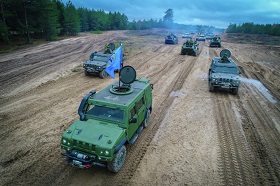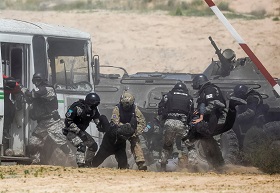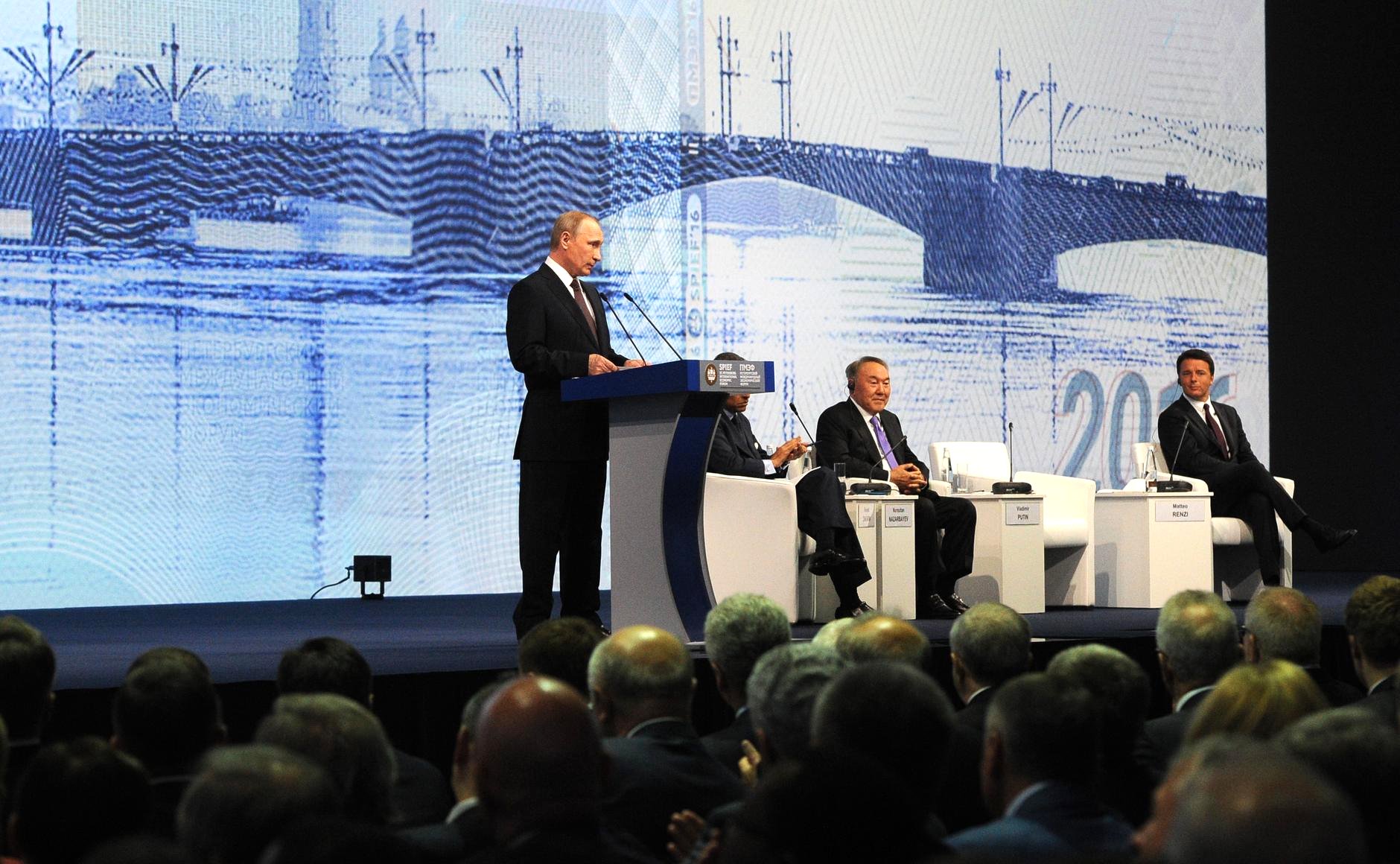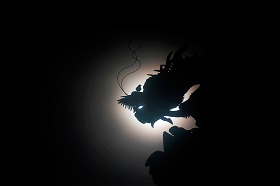Civil unrest at its periphery has worried Russia for a considerable time. It has required Moscow a constant effort to maintain stability within its traditional sphere of influence. Central Asia appears to be no less decisive for Moscow than Belarus or Nagorno-Karabakh. A series of issues concerning Russia’s economic stability and national security arise not only because of the common historical past between Russia and the five -Stans. Diversified risks have emerged in Central Asia: from terrorism and extremism to energy security and drug trafficking. The region is also home to a number of exclaves and autonomous regions, representing another potential cause for disorder.
Russia’s military engagement in the region revolves around a number of tools and strategies and takes place both in bilateral and multilateral terms. Despite the decreasing likelihood of conflict in Central Asia, in the last two years Russia has been modernizing its facilities in the region.
In case of conflict, together with the actual military presence on the ground, Russia holds two trump cards. First, Russia could easily relocate both ground and aerospace forces from its other bases on the Russian soil to Central Asia. The second trick up Russia’s sleeve is essentially represented by the Central Asian forces themselves. All countries in the region have been part of Russia-organized training sessions or have had the chance to learn from their neighbor during a number crisis management or peacekeeping operations.
Until recently, there was a sort of implicit agreement between the two major countries: while Russia was engaged militarily, China was more and more interested in the economic sphere. Lately, Beijing has been worried about the stability of the region not only because of the fear of spillovers, but also for the accomplishment of its Belt and Road Initiative. Moscow, however, is not ignoring what China has been doing in the area, so much so that newspapers’ headlines have been talking of the “new great game”. At present, Russia undoubtedly has huge strategic advantages, starting from the military facilities to the wide range of forces and equipment deployed on the ground, which allows Moscow to be involved in military conflicts of different scale. While remaining Central Asia’s top security ally, Russia stays vigilant. As great power competition grows, Russia stands firm in its position.
The latest months have been chaotic in Kyrgyzstan, where the fraudulent parliamentary elections held in October resulted in a popular uprising, as President Sooronbay Jeenbekov lost his grip on the population. A few hours following the elections, the Russian Defense Ministry declared to have put its Kant airbase in the Chuy Oblast’ on high alert [i].
Civil unrest at its periphery has worried Russia for a considerable time. It has required Moscow a constant effort to maintain stability within its traditional sphere of influence. Central Asia appears to be no less decisive than Belarus or Nagorno-Karabakh in this sense.
After the Soviet collapse, Russia has been involved in the Central Asian political disorder first-hand. During the 1990s, a violent civil war struck Tajikistan, while the beginning of the new century started with the US military intervention in Afghanistan. Later on, new ethnic tensions mounted in the Fergana Valley, two revolutions erupted in Kyrgyzstan, Uzbekistan was shocked by the Andjan massacre and by the rise of the Islamic Movement.
A series of issues concerning Russia’s economic stability and national security arise not only because of the common historical past between Russia and the five -Stans. Territorial integrity apparently represents one of the top priorities for the Kremlin, as is shown in the 2016 Foreign Policy Concept and in the 2015 National Security Strategy.
On Alert for Systemic Risks
Diversified risks have emerged in Central Asia: from terrorism and extremism to energy security and drug trafficking. For instance, internal fractures could easily become potential conflict drivers. So far, within the Fergana Valley, especially in southern Kyrgyzstan, ethnic divisions have twice turned into real violence. Lately, the number of ethnic Russians in Central Asia has been decreasing, but Russia is still eager to protect its compatriots abroad. The region is also home to a number of exclaves and autonomous regions, representing another potential cause for disorder. Other possible factors can be found in the management of natural resources, especially water.
Particularly, Afghanistan represents a clear source of instability not only for its bordering states. Just to mention one example, the illicit Afghan opium trade through the Northern route is mainly directed towards Russia [ii].
The progressive disengagement by the United States and NATO has been considered as a substantial loss by the Central Asian countries. By May of this year, according to the Agreement for bringing peace to Afghanistan, the US should withdraw their troops from Afghanistan. While this event could reshape Russia’s role in the region, the agreement between the Taliban and Washington seems to overlook the potential consequences for the security of Central Asia [iii]. Moreover, a widespread fear of Central Asian returnees from the Middle East and the Syrian Civil War grips the whole area.
The fear of spillovers is thus persistently around the corner. As Robert Heinlein stated, “A generation which ignores history has no past and no future.” Moscow has taken things literally. Its history has taught it that physical and immaterial borders need to be protected at all costs. After the collapse of the Soviet Union, Boris Yeltsin was motivated by a deep desire to unite the military forces of the post-Soviet space [iv]. Today, despite the temporary loss of face after the 2014 events in Ukraine, Moscow is able to project military power in its backyard.
Russia’s Towering Presence
Russia’s military engagement in the region revolves around a number of tools and strategies and takes place both in bilateral and multilateral terms. Bilateralism and multilateralism are, of course, not mutually exclusive here, but the latter appears to be as less effective as compared to bilateralism.
In 1992, the representatives of Russia, Armenia and the four Central Asian states met in Tashkent, where the Collective Security Treaty was signed. This treaty would have bound them to a collective security effort. The “Eastern NATO” promotes a multilevel security architecture based on joint military exercises, supplies of modern weapons and equipment of military bases. However, the CSTO has been criticized throughout the years for having missed some opportunities of intervention, like during the 2010 Osh protests in Kyrgyzstan. Member states have, in fact, been reluctant to intervene in ethnic or internal conflicts.
Furthermore, in 2017 the CIS Anti-Terrorism Centre held its first military exercise in Tajikistan. The reason behind this CIS initiative was probably the desire to include, among others, the Uzbek personnel–given that Uzbekistan left the CSTO in 2012 [v].
The Russian presence in terms of military bases is mainly part of the Soviet heritage. Kazakhstan is the country with the largest number of diversified military facilities. Near Lake Balkhash lies the anti-ballistic missile testing range Sary Shagan leased by Russia, while in the southern part of the country Moscow will be able to use the Baikonur Cosmodrome until 2050.
Tajikistan hosts the largest Russian army formation outside the territory of the Russian Federation, namely the 201st Motor Rifle Division and Federal Guard Service. Four military bases can be found in Kyrgyzstan too, whose lease will last until 2032. Together with these bases, there are also military installations, such as the Balkhash-9 radio technical center or exercise areas [vi]. What is interesting to notice is that, despite the decreasing likelihood of conflict in Central Asia, in the last two years Russia has been modernizing those facilities and equipping them with new Mi-8MTV-5-1 helicopters or drones [vii].
While Kazakhstan, Kyrgyzstan and Tajikistan are members of all the organizations promoted by Russia, this is not true for the other two Central Asian countries. However, even though Uzbekistan and Turkmenistan do not have any Russian military facility on their soil, they still rely on Russia for their border security because of the Afghan issue. In 2017, following a twelve-year silence, the first bilateral exercise between Russia and Uzbekistan took place at the Forish Range in Jizzakh.
Russia’s Central Asian Trump Cards
According to a study, between 2015 and 2020, Russian supplies amounted for 62% of the arms market in the whole region. This percentage has considerably increased during the last decade, with Kazakhstan being the largest consumer of the area [viii]. However, this monopoly is not equally distributed among Central Asian states. Uzbekistan prefers buying weapons from China, while Turkey is the largest arms supplier for Turkmenistan [ix].
In case of a conflict, together with the actual military presence on the ground, Russia holds another two trump cards. In peacetime, Central Asian bases are under direct control of the Russian Central Military District, which is located between Siberia, the Ural and the Volga region. This means that Russia could easily relocate both ground and aerospace forces from its other bases on the Russian soil to Central Asia. For instance, a Joint Inter-Service Combat Operation (JISCO) could be conducted by using forces from the 41st Combined Arms Army in Novosibirsk and the 14th Air and Air Defense Forces Army in Yekaterinburg [x].
The second trick up Russia’s sleeve is essentially represented by the Central Asian forces themselves. All countries in the region have been part of Russia-organized training sessions or have had the chance to learn from their neighbor during the crisis management or peacekeeping operations carried out by Moscow in the last thirty years.
Russia’s Policies Encounter China’s Engagement
The exclusivity of Russia’s military influence on the region has been recently thrown into doubt, as “new” actors are trying to step in. Until recently, there was a sort of implicit agreement between two major countries: while Russia was engaged militarily, China was more and more interested in the economic sphere. Lately, Beijing has been worried about the stability of the region not only because of the fear of spillovers, but also for the accomplishment of its Belt and Road Initiative.
The tacit agreement was “violated” as soon as China started to show its interest in the security field and switched from soft to hard power. In fact, the principle of non-intervention has been de-listed from its white papers and under the 2015 anti-terrorism law China is able to deploy its forces abroad [xi].
The breach has taken many forms. For instance, Russia is no more the only one providing local officers with training programs. The People’s Republic of China has been organizing more and more of those courses, not only under the Shanghai Cooperation Organization. Together with military exercises, it seems that Beijing has guaranteed its first military base in the mountainous Tajik region of Gorno-Badakhstan [xii]. In 2016, Tajikistan joined the Quadrilateral Cooperation and Coordination Mechanism, a new exclusive security framework initiated by China aimed at countering extremism and terrorism, much at Russia’s discontent [xiii].
Moscow, however, is not ignoring what China has been doing in the area, so much so that newspapers’ headlines have been talking of the “new great game”. While Russia still uses “national security” as a justification for all its moves in Central Asia, this may not be the only reason [xiv]. The deployment of UAVs in Kyrgyzstan and of modern S-300 anti-aircraft missile systems in Tajikistan may hide a strong will to keep the area under Russia’s traditional sphere of influence.
The limited bilateral cooperation, the ineffectiveness of the Shanghai Cooperation Organization and the lack of strategic military facilities hinder China’s ability to have a sound military projection. At present, Russia undoubtedly has huge strategic advantages, starting from the military facilities to the wide range of forces and equipment deployed on the ground, which allows Moscow to be involved in military conflicts of different scale. While remaining Central Asia’s top security ally, Russia stays vigilant. As great power competition grows in the region, better safe than sorry.
References
- Hedenskog, J.; Holmquist, E. & Norberg, J. (2019). Security in Central Asia. Russian policy and military posture. FOI - Swedish Defence Research Agency, 1-96.
- Korolev, A. (2019). On the verge of an alliance: Contemporary China-Russia military cooperation. Asian Security, 15(3), 233-252.
- Jardine, B., & Lemon, E. (2020). In Russia’s Shadow: China’s Rising Security Presence in Central Asia. Kennan Cable, 52, 351-368.
- Stent, A. (2019). Putin’s World. Russia against the West and with the Rest. New York: Hachette Book Group, 1-447.
- Sucu, A. E. (2017). The Importance of Russian Military Presence in Central Asia for Russia’s Regional Security. Akademik Hassasiyetler, 4(8), 125-138.
Links
i. The Guardian (2020). Kyrgyzstan election: prime minister resigns after result invalidated amid protests. Available at https://www.theguardian.com/world/2020/oct/06/kyrgyzstan-election-result-declared-invalid-after-mass-protests (27/02/2021).
ii. Hedenskog, J., Holmquist, E., & Norberg, J. (2019). Security in Central Asia: Russian Policy and Military Posture. FOI - Swedish Defence Research Agency, p. 18.
iii. Akhmatova, A. (2020). With US Afghan exit, Russia eyes Central Asian security. The interpreter. Available at https://www.lowyinstitute.org/the-interpreter/us-afghan-exit-russia-eyes-central-asian-security (last accessed 3/03/2021).
iv. Stent, A. (2019). Putin’s World. Russia against the West and with the Rest. New York: Hachette Book Group, p. 149.
v. Lemon, E. (2017). CIS Anti-Terrorism Center Holds First Military Exercises in Tajikistan. Eurasia Daily Monitor Volume 14 (75). Available at https://jamestown.org/program/cis-anti-terrorism-center-holds-first-military-exercises-tajikistan/ (last accessed 2/03/2021).
vi. Sucu, A. E. (2017). The Importance of Russian Military Presence in Central Asia for Russia’s Regional Security. Akademik Hassasiyetler, 4 (8), p. 130.
vii. Szálkai, K. (2020). Russia’s Recent Military Buildup in Central Asia. A Message Without an Address? Center for Strategic & International Studies. Available at https://www.csis.org/blogs/post-soviet-post/russias-recent-military-buildup-central-asia (last accessed on 17/02/2021).
viii. Jardine, B., & Lemon, E. (2020). In Russia’s Shadow: China’s Rising Security Presence in Central Asia. Kennan Cable, 52, p. 1.
ix. Jardine, B., & Lemon, E. (2020). In Russia’s Shadow: China’s Rising Security Presence in Central Asia. Kennan Cable, 52, p.6.
x. Hedenskog, J., Holmquist, E., & Norberg, J. (2019). Security in Central Asia: Russian Policy and Military Posture. FOI - Swedish Defence Research Agency, p. 59.
xi. Szálkai, K. (2020). Russia’s Recent Military Buildup in Central Asia. A Message Without an Address? Center for Strategic & International Studies. Available https://www.csis.org/blogs/post-soviet-post/russias-recent-military-buildup-central-asia (last accessed on 17/02/2021).
xii. Blank, S. (2019). China’s Military Base in Tajikistan: What Does it Mean? The Central Asia – Caucasus Analyst. Available at https://www.cacianalyst.org/publications/analytical-articles/item/13569-chinas-military-base-in-tajikistan-what-does-it-mean?.html (last accessed 4/03/2021).
xiii. Racoviţă, C. A. (2018). A brief presentation of the Quadrilateral Cooperation And Coordination Mechanism. Central Asia Analytics. Available at https://ccirom-tkm.ro/2018/01/17/a-brief-presentation-of-the-quadrilateral-cooperation-and-coordination-mechanism/ (last accessed 1/03/2021).
xiv. Szálkai, K. (2020). Russia’s Recent Military Buildup in Central Asia. A Message Without an Address? Center for Strategic & International Studies. Available at https://www.csis.org/blogs/post-soviet-post/russias-recent-military-buildup-central-asia (last accessed on 17/02/2021).








